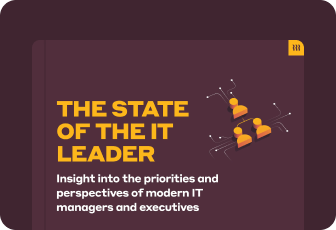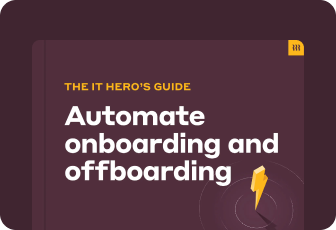Co-employment is a relationship where two companies, typically a client business and a Professional Employer Organization (PEO), share employer responsibilities for the same employee. This arrangement allows the client to handle day-to-day operations while the PEO manages HR functions, payroll, and compliance.
How does co-employment work?
Co-employment involves a partnership between the client company (or business owner) and a PEO, where each party assumes specific employer responsibilities. The client company does what they do best: They focus on running their business. Meanwhile, as their employment partner, the PEO acts as an HR expert, streamlining certain HR administration processes and compliance tasks, which frees up more of the client company’s time and resources for strategic and value-adding work.
Company responsibilities
In a co-employment relationship, the client company retains control over:
- Day-to-day management: Directing their employees' daily tasks and responsibilities.
- Work environment: Maintaining a safe and productive workplace.
- Hiring and firing: Making decisions on hiring, promotions, and terminations.
- Salaries and wages: Choosing how much to pay all workers.
- Performance management: Conducting performance reviews and evaluations and managing employee performance.
Co-employer responsibilities
The PEO, as the co-employer, handles:
- Payroll processing: Managing payroll calculations, payroll tax withholdings, and distributions.
- Benefits administration: Offering and administering employee benefits such as health insurance, retirement plans, and other perks.
- HR compliance: Ensuring compliance with employment laws and regulations, including worker classification and reporting requirements.
- Risk management: Providing workers' compensation insurance and managing claims.
When would a company use co-employment?
Companies may use co-employment arrangements for many different reasons. Some of the most common situations in which a company might engage in a co-employment relationship include:
- HR outsourcing: To outsource complex HR functions and reduce administrative burden on their own in-house team.
- Compliance: To ensure compliance with labor laws and regulations, especially when expanding into new regions.
- Focus on core business: To allow their internal HR team to focus on core business operations without being bogged down by time-consuming administrative tasks.
- Access to better benefits: To provide employees with access to better benefits plans that might not be feasible or affordable for a smaller company to offer independently.
PEOs vs EORs
While professional employer organizations (PEOs) and employer of record (EORs) are often used interchangeably, they aren’t the same and they don’t both operate under a co-employment model.
PEOS:
- Enter into a co-employment relationship with the client company.
- Share responsibilities, allowing the client to manage day-to-day operations while the PEO handles HR tasks.
EORs, which are sometimes called international PEOs:
- Act as the sole legal employer for tax purposes and compliance.
- Are typically used for hiring in international markets where the client company does not have a legal entity.
What is a staffing agency?
A staffing agency provides temporary or permanent employees to client companies. Unlike co-employment, staffing firms retain full control over employment responsibilities, including payroll and benefits, while the client company directs the work.
What is employee leasing?
Employee leasing involves a leasing company providing workers to a client business on a long-term basis. This is a way that businesses can access skilled workers without having to go through the complexities of recruiting and employing them—especially when they only need to employ them on a temporary basis. Once they’ve fulfilled their work obligations, employees engaged through leasing return to the staffing company.
What is joint employment?
Joint employment occurs when two or more businesses share control over an employee's work or working conditions. Both companies may be held liable for compliance with labor laws and regulations.
Pros and cons of co-employment
Pros of co-employment
Cons of co-employment
Compliance assistance: Helps ensure compliance with complex labor laws and regulations.
Loss of control: Some companies may feel co-employment gives them less control over certain human resources functions.
Potential for cost savings: Reduces administrative costs related to payroll processing and other HR support when employee headcount is low.
Added complexity: The co-employment relationship can be complex and requires clear communication and defined responsibilities.
Access to better benefits at lower costs: Provides access to comprehensive benefits packages, which can improve employee satisfaction and retention.
Increased costs at scale: While cost-effective for some, the fees associated with certain PEO providers may be high for small businesses, and the costs increase as your headcount grows.
Risk mitigation: Offers risk management services, including workers' compensation and claims handling.
Frequently asked questions about co-employment
How does a co-employment agreement work?
A co-employment agreement is a contractual agreement between a client company and a PEO, outlining their shared workforce management responsibilities and roles. The agreement should specify each party’s tasks such as payroll, benefits administration, and compliance, so each party has a clear understanding of their obligations.
Can co-employment be used for both full-time and part-time employees?
Yes, co-employment arrangements can be used for both full-time and part-time employees. The PEO will handle HR functions for all types of employees, including payroll, benefits, and compliance.
What role does the HR department play in a co-employment relationship?
In a co-employment relationship, the client company's HR department can focus on strategic HR functions like talent management, onboarding new hires, and employee development. The PEO manages administrative HR tasks, including payroll, benefits, and regulatory compliance.
Can co-employment arrangements include independent contractors?
Co-employment arrangements primarily cover employees, not independent contractors. However, some PEOs offer services to help manage independent contractors, making sure companies avoid misclassification of their workers.
What is the difference between co-employment and a contractual relationship with a staffing agency?
Co-employment involves sharing employer responsibilities with a PEO, where both parties have defined roles in managing employees. A contractual relationship with a staffing agency typically involves the agency retaining full control over employment functions, providing workers to the client company without shared responsibilities.
Are there specific industries where co-employment is more beneficial?
Co-employment can be beneficial across various industries, particularly for small to medium-sized businesses that need HR support. Industries with complex regulatory requirements, such as healthcare, manufacturing, and technology, may find co-employment especially advantageous.
What should companies consider when entering into a co-employment agreement?
Companies should consider the PEO's reputation, service offerings, compliance track record, and costs. It's essential to thoroughly review the co-employment agreement, looking for clear definitions of responsibilities and to understand how the PEO will integrate with your company's existing HR processes.
Disclaimer: Rippling and its affiliates do not provide tax, accounting, or legal advice. This material has been prepared for informational purposes only, and is not intended to provide or be relied on for tax, accounting, or legal advice. You should consult your own tax, accounting, and legal advisors before engaging in any related activities or transactions.

















































































































